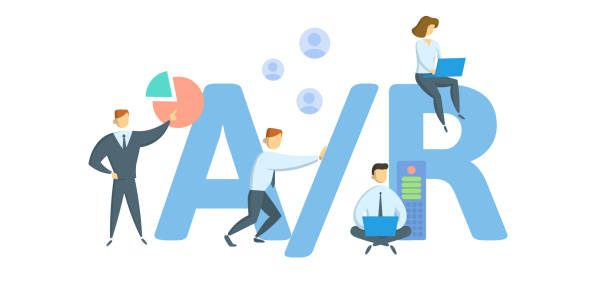Most businesses sell to their customers on credit. The items or services ordered by customers are delivered before any payment is made. Accounting-wise, we use an account called “Accounts Receivable” to track that a payment is due by the customer. Technically for every customer, we track the invoices that are sent with a set of metadata such as date; invoice numbers; payment due date; contact names and addresses etc…
What are accounts receivable?
Accounts receivable is any money your customers owe you for goods or services they purchased from you in the past. This money is typically collected after a few weeks and is recorded as an asset on your company’s balance sheet.
Does accounts receivable count as revenue?
Accounts receivable is an asset account, not a revenue account. However, under accrual accounting, you record revenue at the same time that you record an account receivable.
How do you collect Accounts Receivable?
Every invoice has a due date and, in a perfect world, customers would pay before the invoice becomes overdue. In practice, you often have to remind them! You can use one of the many collection letter templates we wrote or read this post to know how to write effective dunning letter. In practice, most companies use AR automation software solutions. Writing hundreds of payment reminders is a perfect candidate for automation.
What if customers don’t pay their invoices?
There is an entire industry called factoring dedicated to collecting payments from customers. This industry is typically for companies that sell to consumers. They buy in bulk hundreds or thousands of unpaid invoices for 20 to 30% of the original invoice value and use collection software and collection agents to convince (“Threaten?”) customers to pay.
Why is accounts receivable important?
Having lots of customers is great. But if some of them are paying you late, or aren’t paying at all, selling to them hurts your business and can lead to cash flow problems.
One of the best ways to “stay on top of your AR”, is to calculate and monitor your Days Sales Outstanding (DSO) also called the Accounts Receivable Turnover Ratio.
What is the accounts receivable turnover ratio?
The accounts receivable turnover ratio is a simple financial calculation that shows you how fast your customers are at paying their bills.
We calculate it by dividing total net sales by average accounts receivable.
For example, let’s use a company, Acme with total annual sales of $365,000. Let’s assume that their total accounts receivable is $35,000 on Jan 1, 2020 and $65,000 on December 31, 2020. Average accounts receivable is calculated as ($35,000+$65,000)/2 = $50,000.
Accounts receivable turnover ratio is calculated by dividing net sales by average accounts receivable: $365,000/$50,000 = 7.3.
What is Days Sales Outstanding (DSO)
DSO is calculated by calculating the revenue per day ($365,000/365 days per year = $1,000) and then dividing the average accounts receivable by the revenue per day.
DSO = $50,000 / $1,000 = 50 days. On average a customer takes 50 days to pay their invoices. For most industries, this is not a good result!
Meet Troveworks, the eight-legged Octopus that does the collection for you
What are the typical reports used in AR Collection?
Aging Report
It is a report that tracks by customers how much is owed for set periods (less than 30 days; 30 to 60 days; 60+ days)
It is a great way to visualize who owes how much and for how long.
What to do when customers don’t pay on time?
Be Clear
Your collection policy and payment expectation need to be well communicated from the start. With Troverworks email communication templates, we see customers starting to remind customers that payment is due before it is due! (“your payment for invoice 123 is due in 5 days”).
Be Consistent
Make sure to constantly remind customers of what they owe, you need to be the most restless vendor, so they pay you first!
Stop working with customers that pay too late
Some customers are known for “managing their cash flow”, which means they pay when they want to pay and not when the invoices are due. Their business thrives because you are lending them money at 0% interest rate. If that’s the case, you should charge interest or move on and no longer work with them.
Meet Troveworks
We built our Software collection Application as a relentless automated collection worker. You install the application from our download page; set up your collection schedule and tweak the collection letters you want to send to your customers. Once you have configured Troveworks, you download the invoices from your billing solution and Troveworks starts sending payment reminders according to your schedule.
Relentless and Automated! You can also use our integration with Quickbooks to automate the end-to-end collection process.


